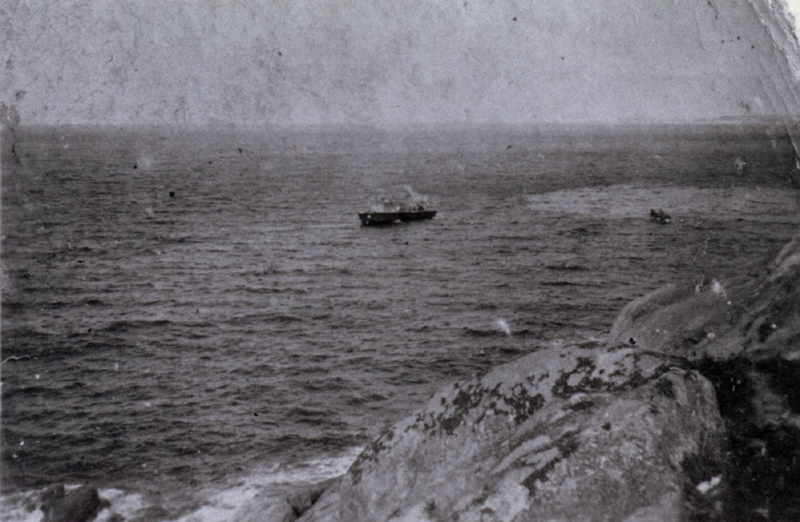B17G Serial Number 4231044
Pilot (P):
Frank G. Chaplick
Co-pilot (CP): Ward H. Skaggs
Navigator (N): Thomas M.
Cowell
Bombardier (B): Armand C. Sedgeley
Top Turret Gunner (TTG): Frank
E. Bradley
Radio Operator (RO): Robert F. Householder - KIA
Waist Gunner
(WG): George J. Murphy - KIA
Waist Gunner (WG): Joseph P. Baron
Ball
Turret Gunner (BTG): Orville F. Grilliot
Tail Gunner (TG): Tony Duca
-KIA
The 14 February 1944 mission was to bomb the railroad yards at
Verona, Italy. Because of severe fog and undercast, the formation could not
locate the target (no mention of heading to secondary target or targets of
opportunity).
Frank C. Chaplick's aircraft was hit by about 12 enemy
aircraft over the target area. Two engines were knocked out and the aircraft
began skidding toward the outer edge of the formation. As a straggler, the enemy
aircraft singled it out and concentrated their attacks upon it.
The tail
guns jammed when the first enemy aircraft attacked. A second enemy aircraft,
realizing that the tail turret was inoperative, closed to point blank range from
astern before firing. This aircraft killed the radio operator, one waist gunner,
the tail gunner and severely wounded the remaining waist gunner as well as
inflicting light wounds on two others.
The third fighter to attack was
shot down (exploded in air) by the wounded top turret gunner, Sgt. Frank E.
Bradley before his turret also became inoperative. The fourth fighter was shot
down by ball turret gunner Orville F. Grilliot. The navigator and bombardier
combined to shoot down a further enemy aircraft before American P- 47s arrived
to drive off the onslaught.
At Chaplick's order, Bradley and Grilliot
worked to lighten the load, throwing overboard as much equipment as possible. In
sight of the field at Calvi, a third engine quit and Chaplick had no option but
to ditch, with the aircraft landing in the sea about 100 yards offshore. Except
for the pilot and the co-pilot, the remainder of the crew gathered in the radio
compartment with two of the dead for the ditching. Sedgeley, the bombardier,
tried to get Tony Duca out of the tail turret to apply first aid but found him
dead.
The aircraft stayed intact in the ditching but as we now know the
tail broke off as it sank. The crew managed to deploy and get into the life
rafts, but were unable to bring the three dead crewmembers with them. The three
KIAs were listed as Robert F. Householder, George J. Murphy and Tony (no middle
initial given) Duca.
Sea Tech working with a U.S. Army representative
wishes to locate the tail section of the aircraft and exhume the three
remaining crew members. Returning them back home to the U.S. for proper
burial.
Additional background.
The 97th BG had previously been
based at Depienne, Tunisia, and had moved about 500 miles to San Giovanni (near
Cerignola) Italy in December 1943, flying their mission from Italy on 14
December. (The full complement of ground crew finally arrived at San Giovanni
from Depienne on 26 Dec.)
San Giovanni was not really a suitable place
for an airstrip, as the the only level ground large enough for the runway was in
a low lying area that was prone to flooding. Even the steel matting laid down as
a runway surface soon sank into the mud and became uneven, causing numerous tire
punctures. There's mention of loading bombs into the aircraft while watching the
tires sink deeper and deeper into the mud. Seven missions were flown from San
Giovanni in December.
The search began practically immediately for a more
suitable location. A site about 25 miles NE was chosen, known by the Italians as
Amendola and by the Luftwaffe as Foggia No. 7. The group began moving to
Amendola on 17 January 1944. This base was also the home of the 2nd BG (B-17s)
and the RAF's No. 205 Group (Halifaxes and B-24s for night ops.), making it one
of the busier airfields in Italy.
The 97th BG flew 21 missions in
January, despite the mud and the move, but bad weather severely curtailed
operations in February. Two major snowfalls and bitter cold allowed only nine
missions to be flown that month. An additional seven missions were scrubbed
after crew briefings, six were scrubbed prior to briefings, and two more were
aborted after takeoff.
The day after Chaplick's aircraft was shot down,
the Benedectine Abbey at Monte cassio was bombed. The 97th BG was in the last
wave of the attack on the Abbey, and carried incendiaries.
The wreck of
the aircraft now lies at 28 meters off the coast of Calvi in Corsica. The tail
has become detatched but lies nearby.
Here are some photos of
the aircraft as it is today
This
photograph, provided by Philippe Castellano, shows the survivors of the
ditching
in their dingy and the fuel stain on the water from the crashed aircraft
can clearly
be seen.
